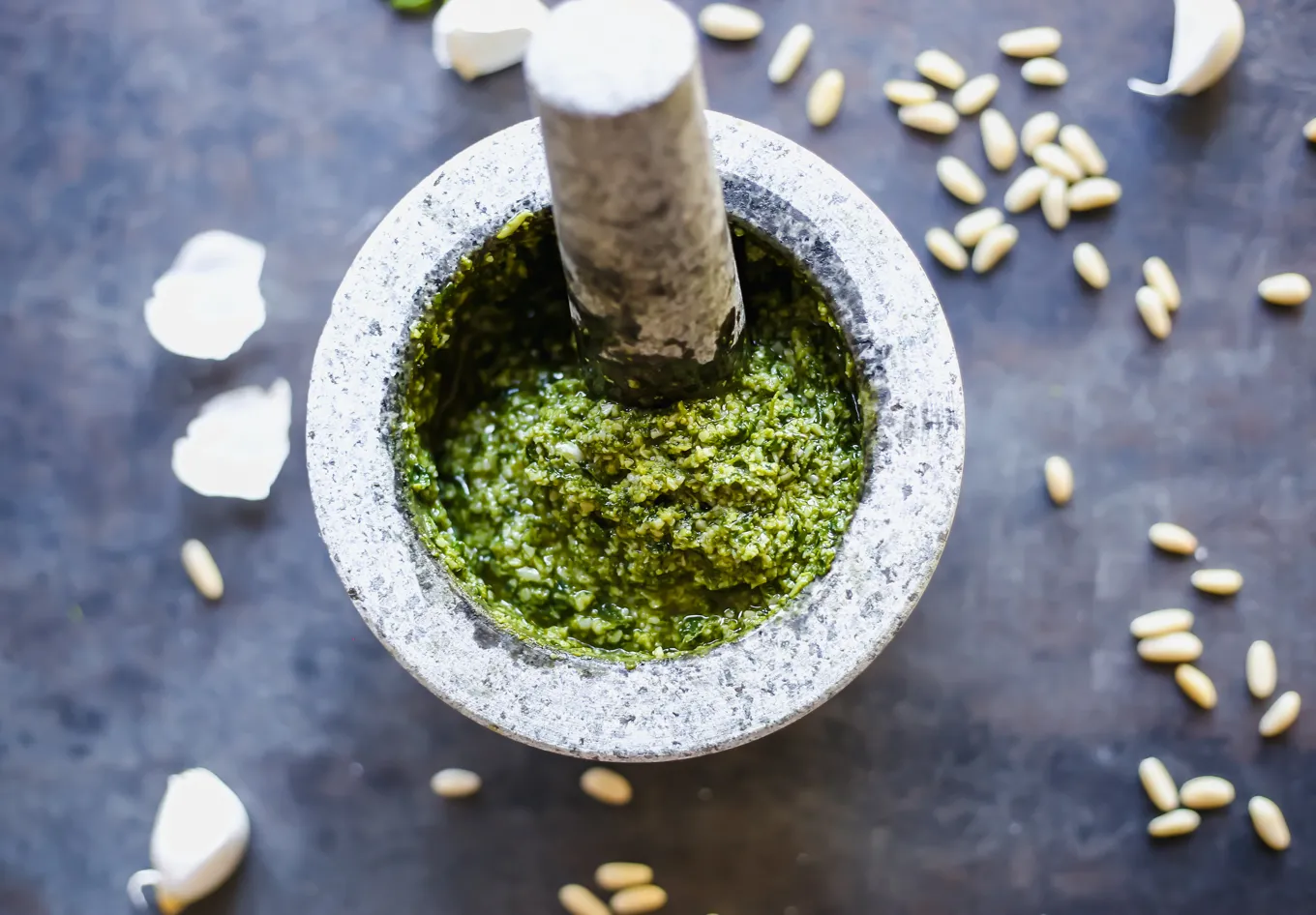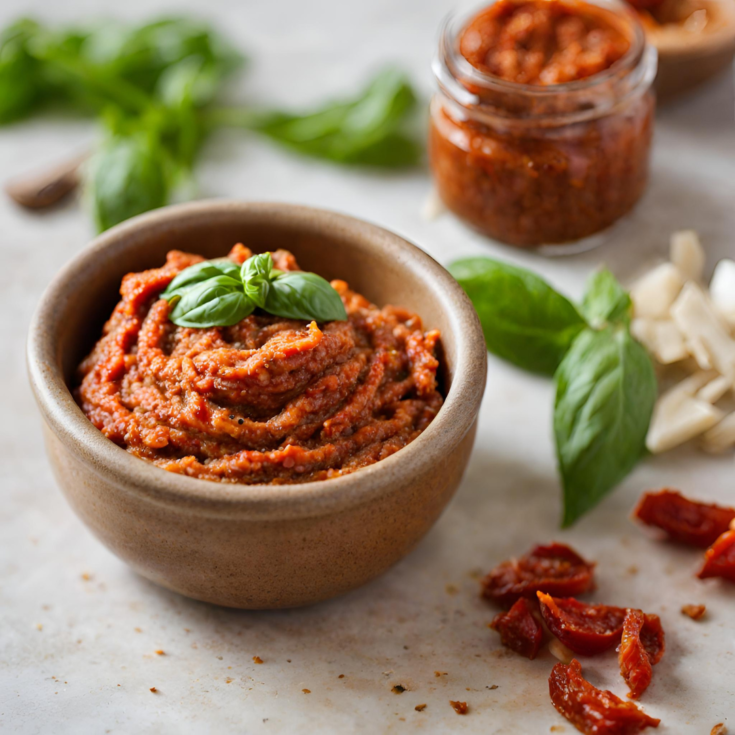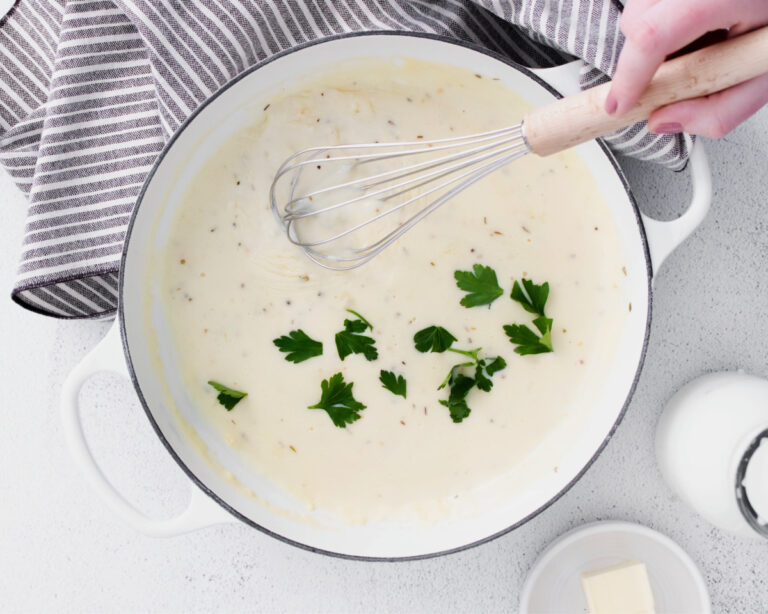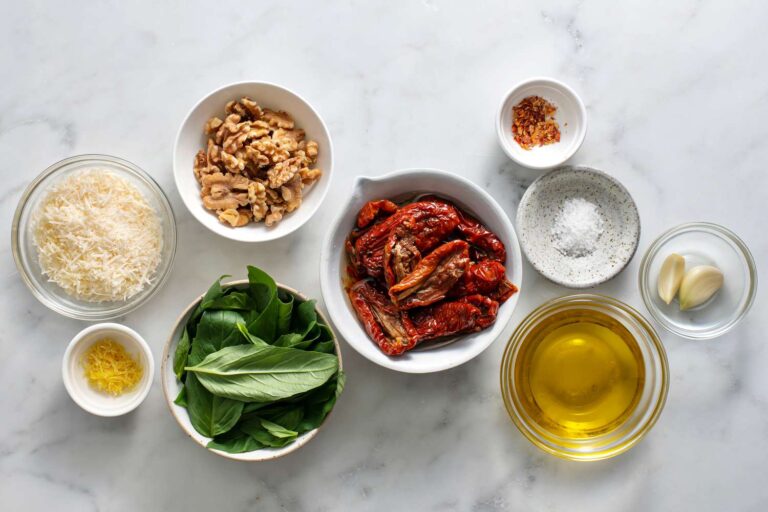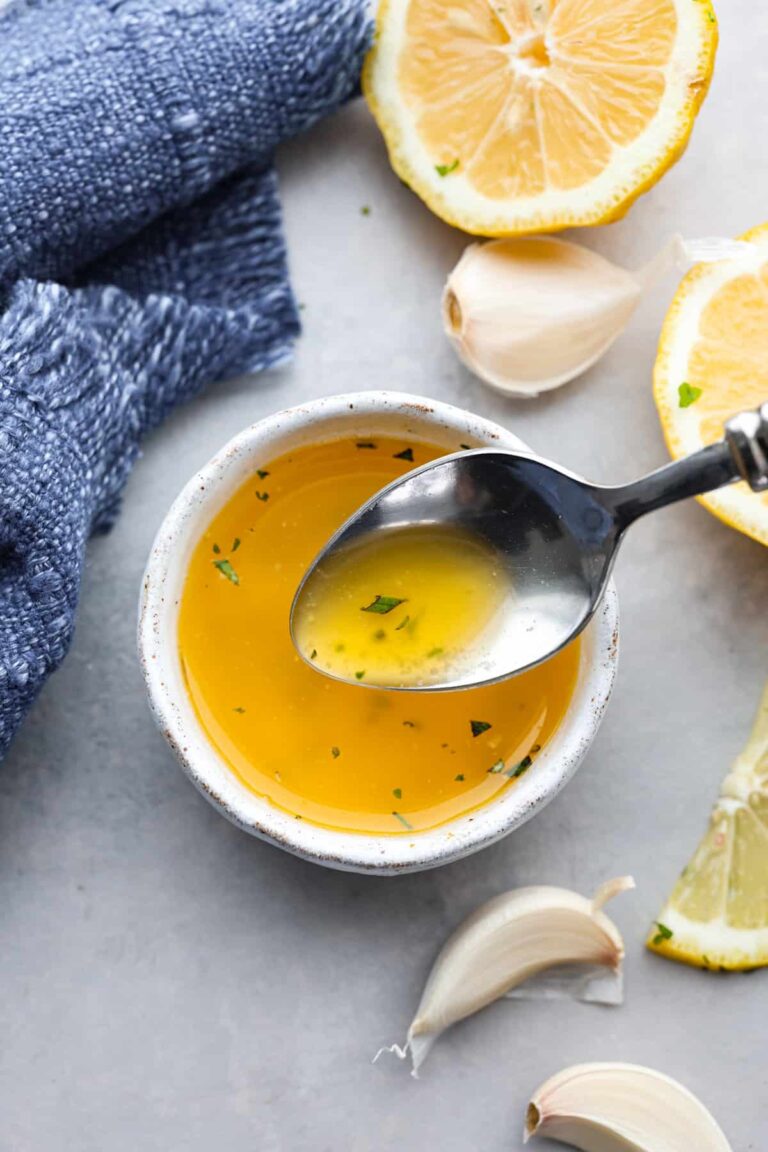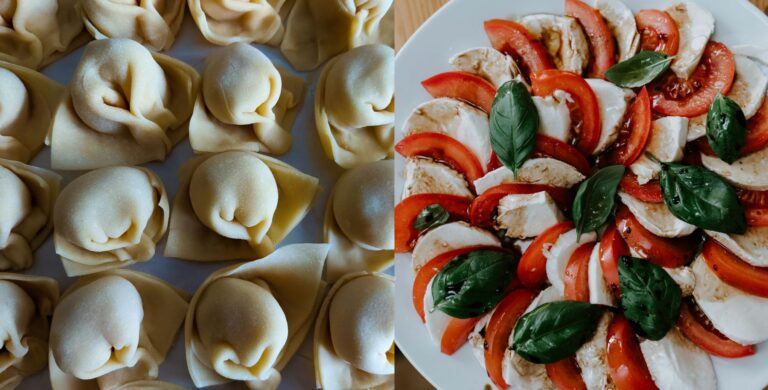Pesto, a quintessential Italian sauce, is beloved worldwide for its fresh, vibrant flavors. Whether you’re a seasoned chef or a home cook, mastering the art of making perfect pesto can elevate your culinary creations. This article about culinary techniques in making pesto will explore various blending techniques and provide tips for achieving the perfect texture and consistency.
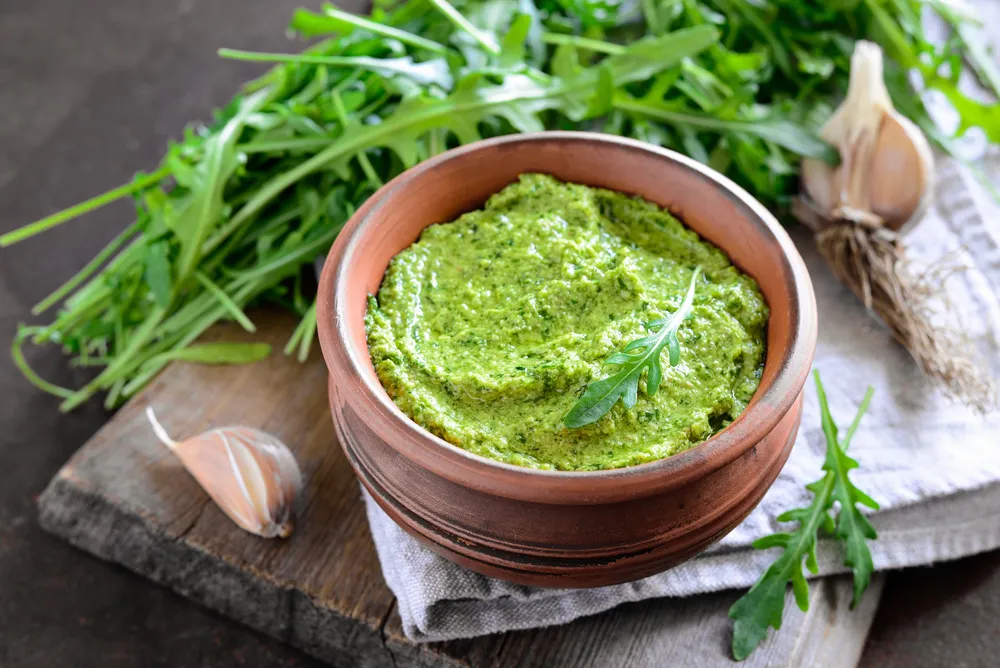
Blending Techniques
Traditional Mortar and Pestle
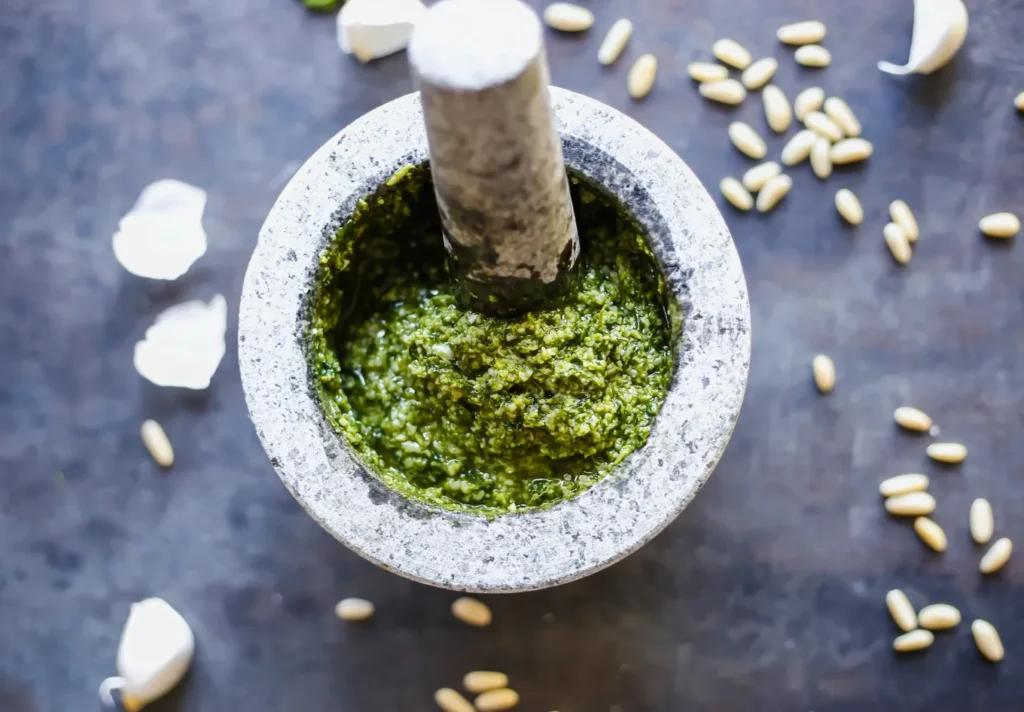
- Using a mortar and pestle is the traditional method of making pesto and offers a hands-on approach that can yield superior results. This technique allows for better control over the texture and incorporates the ingredients more thoroughly.
- Choosing the Right Mortar and Pestle: Select a heavy mortar made of marble or granite with a rough interior. The pestle should be comfortable to hold and heavy enough to crush the ingredients effectively.
- Preparing the Ingredients: Start with fresh basil leaves, high-quality extra virgin olive oil, pine nuts, garlic, Parmesan cheese, and a pinch of salt. Make sure the basil leaves are clean and dry.
- The Grinding Process: Begin by adding the garlic and salt to the mortar and grinding them into a paste. Next, add the pine nuts and continue grinding until they are broken down but still slightly chunky. Add the basil leaves a few at a time, grinding in a circular motion to release their oils and aroma. Finally, add the Parmesan cheese and olive oil, and continue grinding until you reach the desired consistency.
Advantages of the Traditional Method
- Enhanced flavor: The slow grinding process helps release more of the basil’s essential oils, resulting in a richer flavor.
- Control over texture: You can adjust the texture more precisely, achieving a chunkier or smoother pesto based on your preference.
Modern Blender Methods
For those who prefer a quicker method, using a blender or food processor is a popular alternative. While it may not achieve the same level of flavor complexity as the traditional method, it is convenient and efficient.
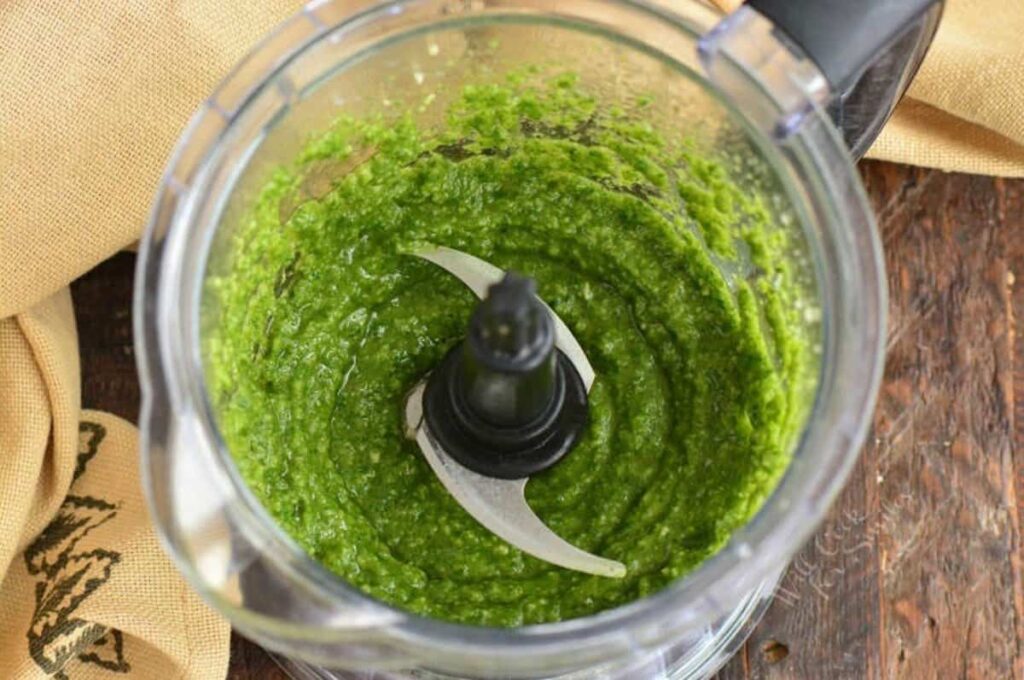
Choosing the Right Equipment: Opt for a high-powered blender or food processor to ensure a smooth and consistent blend. Make sure the blades are sharp and clean.
Blending Process
- Initial Blend: Start by adding the garlic, pine nuts, and Parmesan cheese to the blender. Pulse a few times to break down the ingredients.
- Adding Basil and Oil: Add the basil leaves and half of the olive oil. Blend until the basil is finely chopped.
- Adjusting Consistency: Gradually add the remaining olive oil while blending until you reach the desired consistency.
Tips for Using a Blender
- Use the pulse function to avoid over-blending, which can lead to a paste-like texture.
- Add a bit of ice water or a small ice cube to keep the pesto cool and preserve its vibrant green color.
Advantages of the Modern Method
- Speed: The entire process can be completed in a few minutes.
- Convenience: Easy cleanup and less manual effort.
Texture and Consistency Tips
Achieving the Perfect Blend
The texture of pesto is a matter of personal preference, but certain tips can help you achieve the perfect blend.
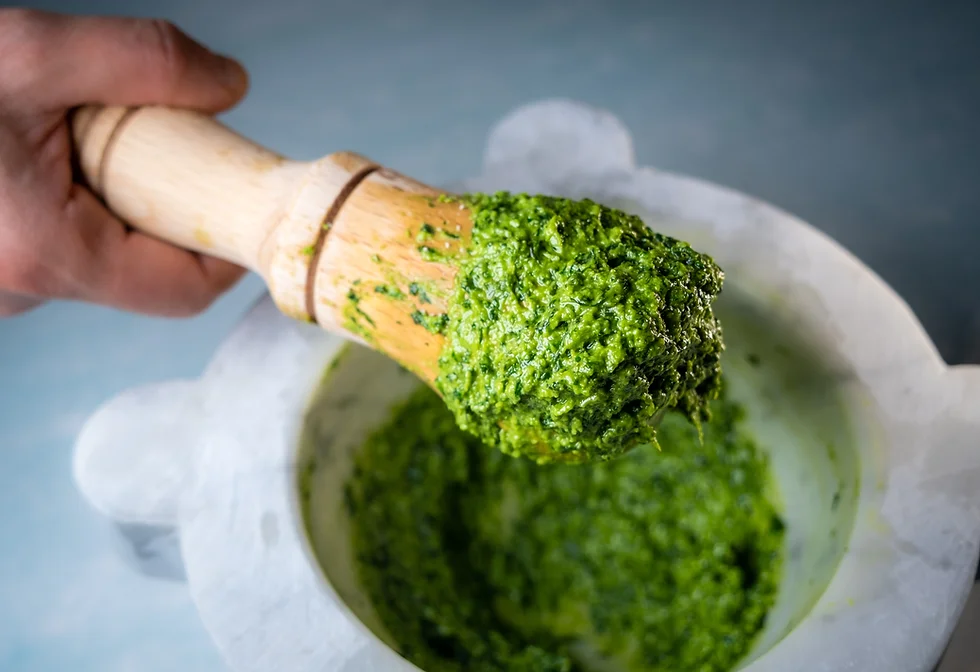
- Balance of Ingredients Ensuring the right balance of ingredients is crucial. Too much oil can make the pesto too runny, while too little can make it too thick.
- Proper Timing If you’re using a blender, add the olive oil gradually and blend in short bursts. This helps you monitor the consistency and avoid over-processing the ingredients.
- Using the Right Cheese Grate the Parmesan cheese finely before adding it to the mix. This ensures it blends evenly and contributes to a smooth texture.
- Controlling Heat To prevent the basil from wilting and losing its color, blend the ingredients in short pulses and avoid prolonged blending. Adding a small ice cube or a splash of cold water can also help maintain the vibrant green color.
Adjusting Thickness
Sometimes, you may need to adjust the thickness of your pesto based on how you plan to use it.
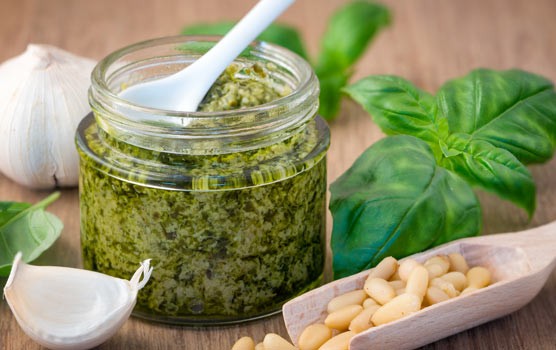
- Thinning the Pesto If the pesto is too thick, you can thin it out by adding a bit more olive oil, water, or even lemon juice. This can make it more suitable for drizzling over dishes or using as a salad dressing.
- Thickening the Pesto If the pesto is too runny, add more grated cheese or a handful of nuts. You can also blend in additional basil leaves to thicken the consistency.
- Storing Pesto To maintain the best texture and flavor, store pesto in an airtight container in the refrigerator. To prevent oxidation and browning, cover the surface of the pesto with a thin layer of olive oil before sealing the container.
Incorporating Pesto into Dishes
Pesto is incredibly versatile and can be used in a variety of dishes. Here are some ideas:




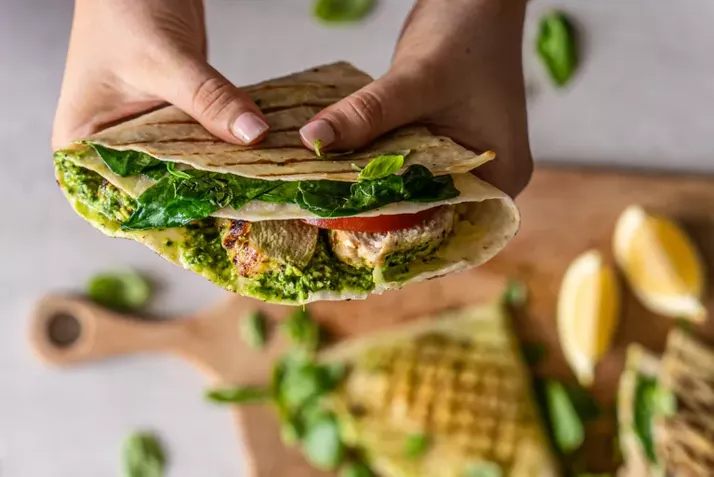
- Pasta The classic use for pesto is as a sauce for pasta. Toss freshly cooked pasta with pesto for a quick and flavorful meal. Add a splash of pasta cooking water to help the pesto coat the pasta evenly.
- Sandwiches and Wraps Spread pesto on sandwiches or wraps for an extra burst of flavor. It pairs well with grilled chicken, fresh vegetables, and mozzarella cheese.
- Soups and Stews Stir a spoonful of pesto into soups or stews just before serving to enhance the flavor and add a fresh, herbaceous note.
- Grilled Meats and Vegetables Use pesto as a marinade or topping for grilled meats and vegetables. It adds a deliciously fresh and aromatic component to your grilled dishes.
- Salad Dressings Mix pesto with a bit of vinegar or lemon juice to create a unique and flavorful salad dressing.
Common Mistakes to Avoid
Even experienced cooks can make mistakes when making pesto. Here are some common pitfalls and how to avoid them:
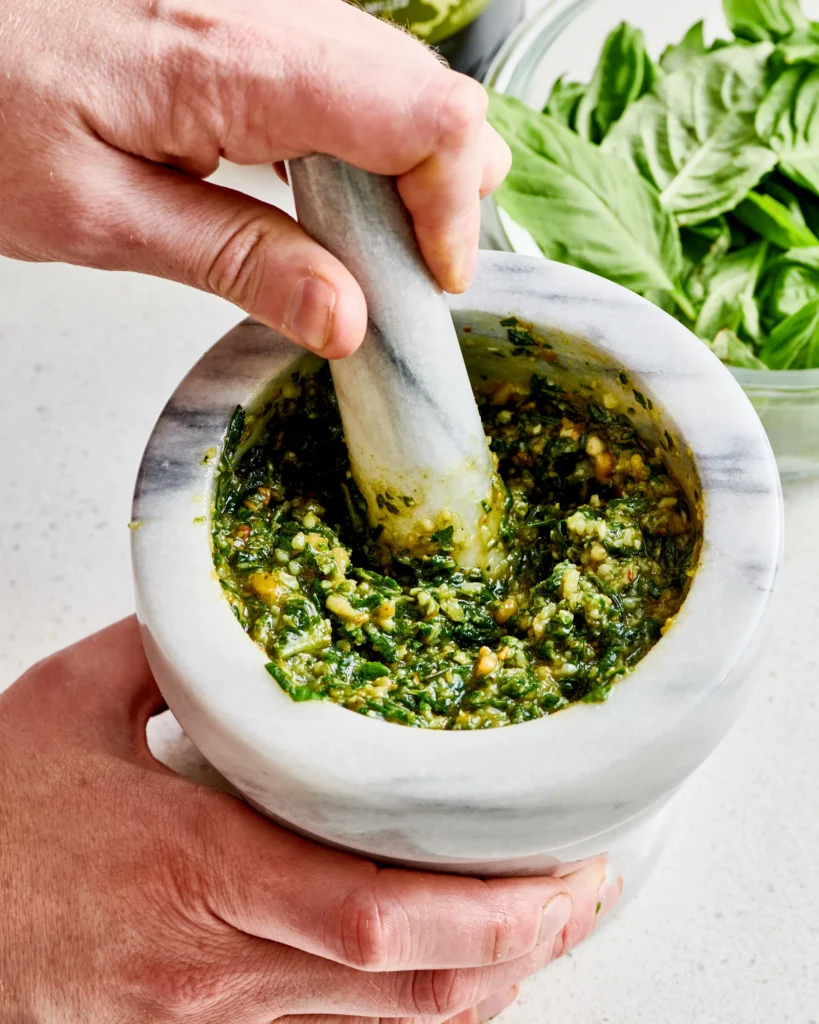

- Using Too Much Garlic Garlic is a potent ingredient, and too much can overpower the other flavors. Start with a small amount and adjust to taste.
- Over-Blending Blending for too long can cause the basil to become bruised and oxidized, resulting in a bitter taste and dull color. Blend in short bursts to preserve the vibrant green color and fresh flavor.
- Improper Storage Pesto can oxidize and lose its flavor if not stored properly. Always store it in an airtight container and cover the surface with a layer of olive oil to keep it fresh.
- Using Stale Ingredients For the best flavor, use the freshest ingredients possible. Avoid using wilted basil or stale nuts and cheese.
Sun Dried Tomato Pesto
A delightful variation of the traditional pesto is sun-dried tomato pesto. This version adds a rich, tangy flavor and a beautiful reddish color to the sauce.
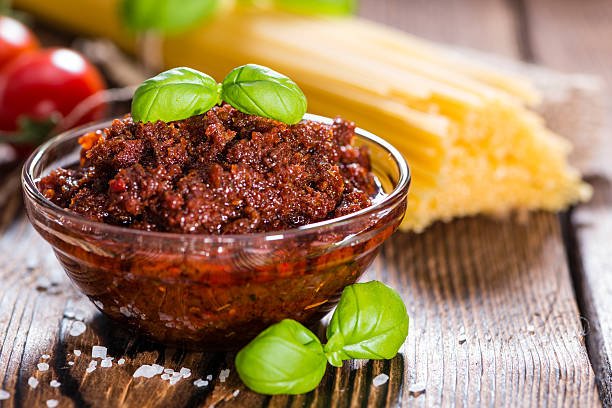
Ingredients for Sun Dried Tomato Pesto
- Sun-dried tomatoes packed in oil
- Fresh basil leaves
- Garlic
- Pine nuts or walnuts
- Parmesan cheese
- Extra virgin olive oil
- Salt and pepper
Making Sun Dried Tomato Pesto
- Preparation: Drain the sun-dried tomatoes if they are packed in oil, reserving the oil for later use. If they are dry, rehydrate them in hot water for about 20 minutes, then drain.
- Blending: Add the sun-dried tomatoes, garlic, nuts, and cheese to the blender or food processor. Blend until the ingredients are finely chopped.
- Adding Basil and Oil: Add the basil leaves and reserved oil from the sun-dried tomatoes or extra virgin olive oil. Blend until smooth.
- Seasoning: Adjust the seasoning with salt and pepper to taste.
Uses for Sun Dried Tomato Pesto
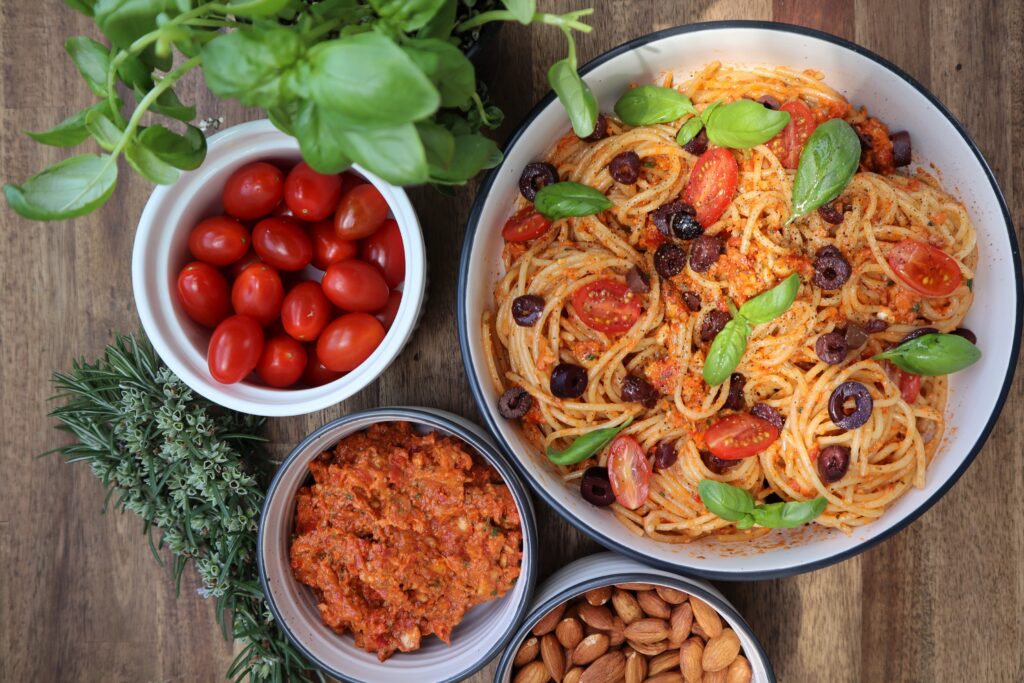



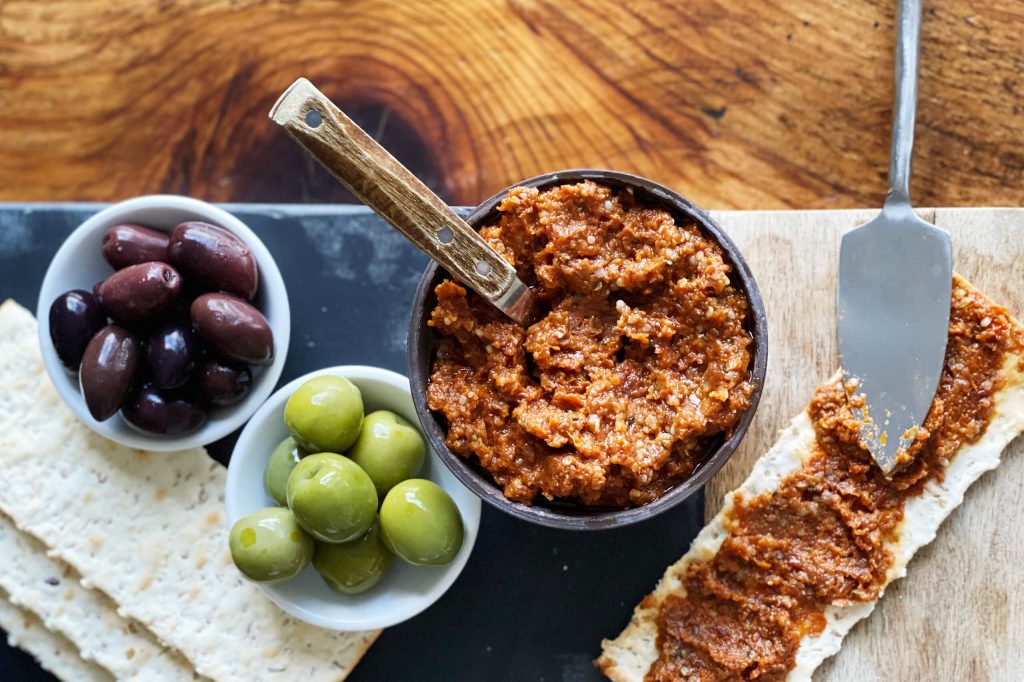
- Pasta Sauce: Toss with your favorite pasta for a flavorful and colorful dish.
- Bruschetta Topping: Spread on toasted bread and top with fresh mozzarella or goat cheese.
- Pizza Sauce: Use as a base sauce for pizza for a unique twist.
- Dip: Serve as a dip with fresh vegetables or breadsticks.
FAQs
Conclusion
Mastering the art of making perfect pesto involves understanding the blending techniques and achieving the right texture and consistency. Whether you prefer the traditional mortar and pestle method or the convenience of a modern blender, the key is to use fresh ingredients and balance the flavors. With these tips and techniques, you can create delicious, vibrant pesto that enhances a variety of dishes. Don’t forget to try the sun-dried tomato pesto for a delightful variation.
Disclosure: Our blog contains affiliate links to products. We may receive a commission for purchases made through these links. However, this does not impact our reviews and comparisons. We try our best to keep things fair and balanced, in order to help you make the best choice for you.

